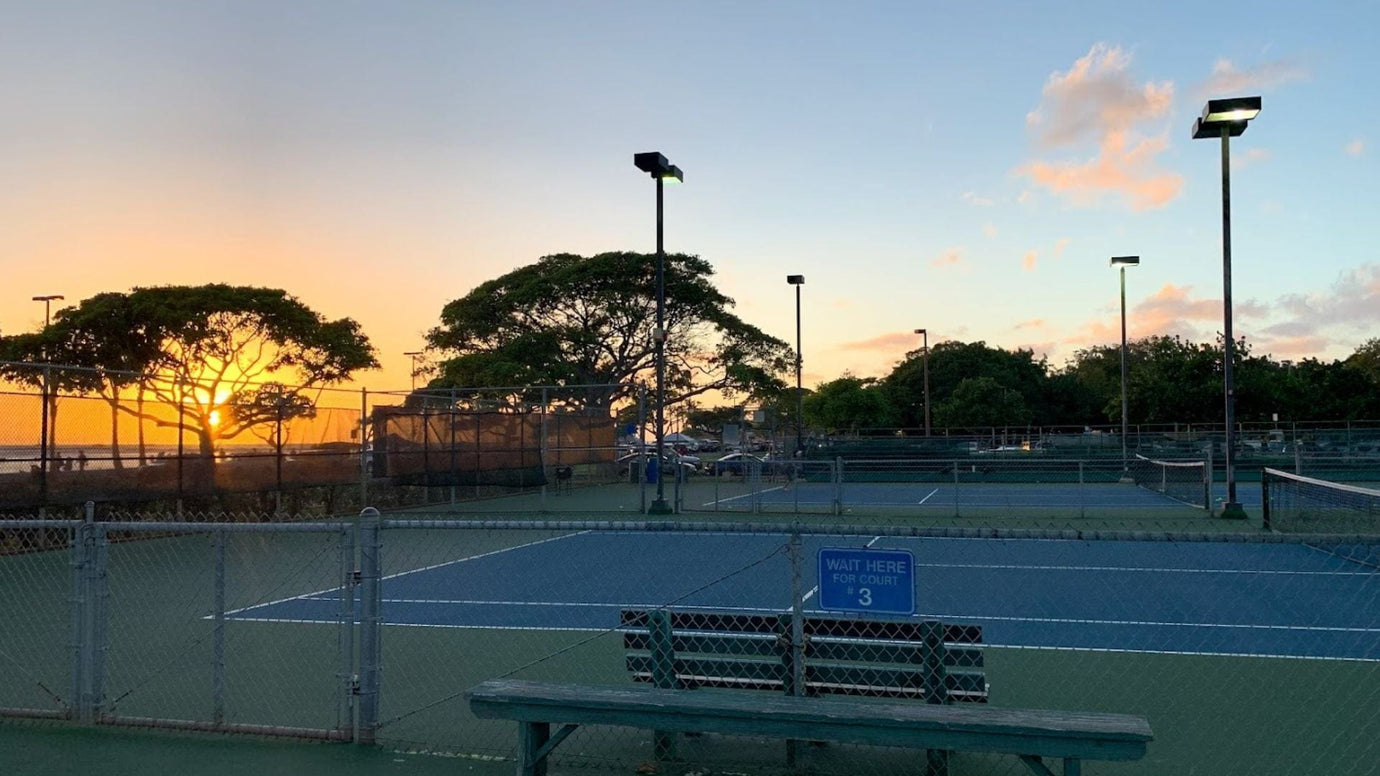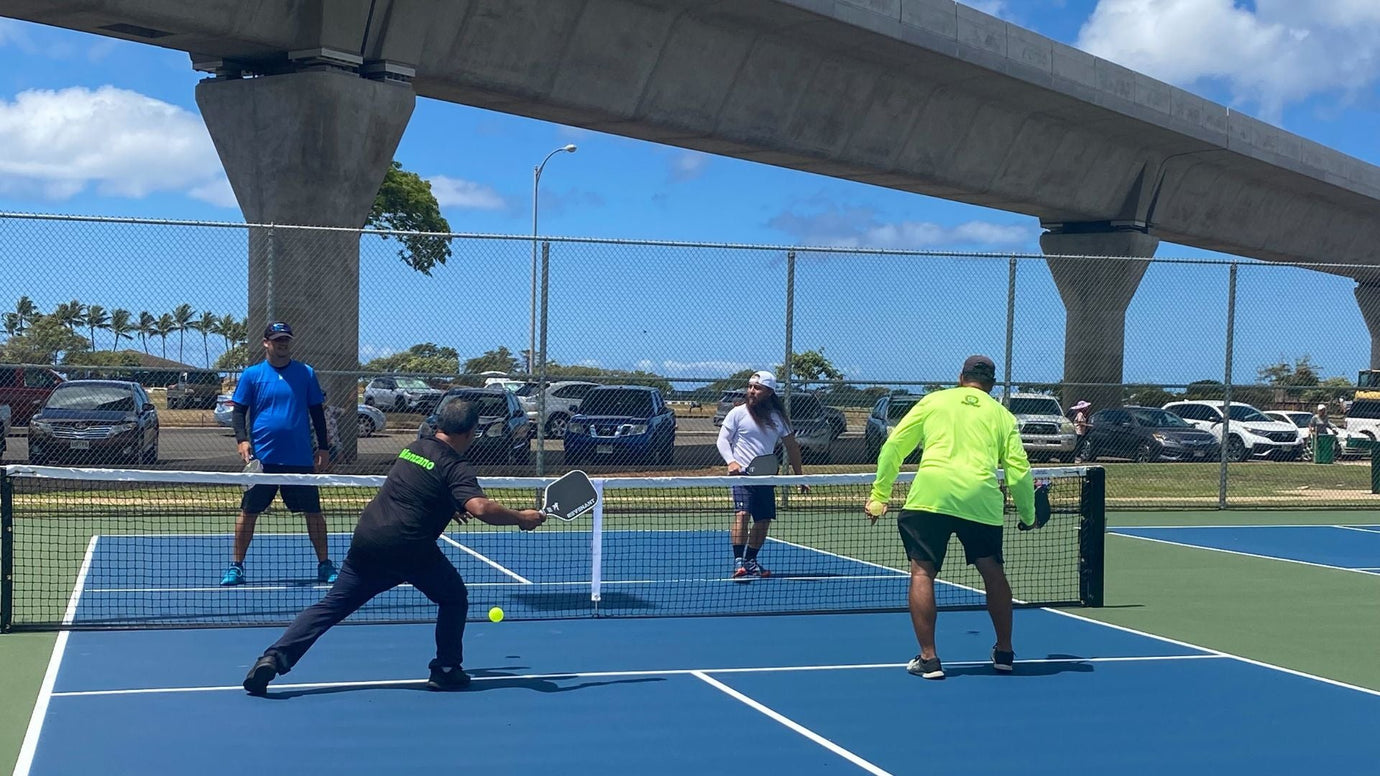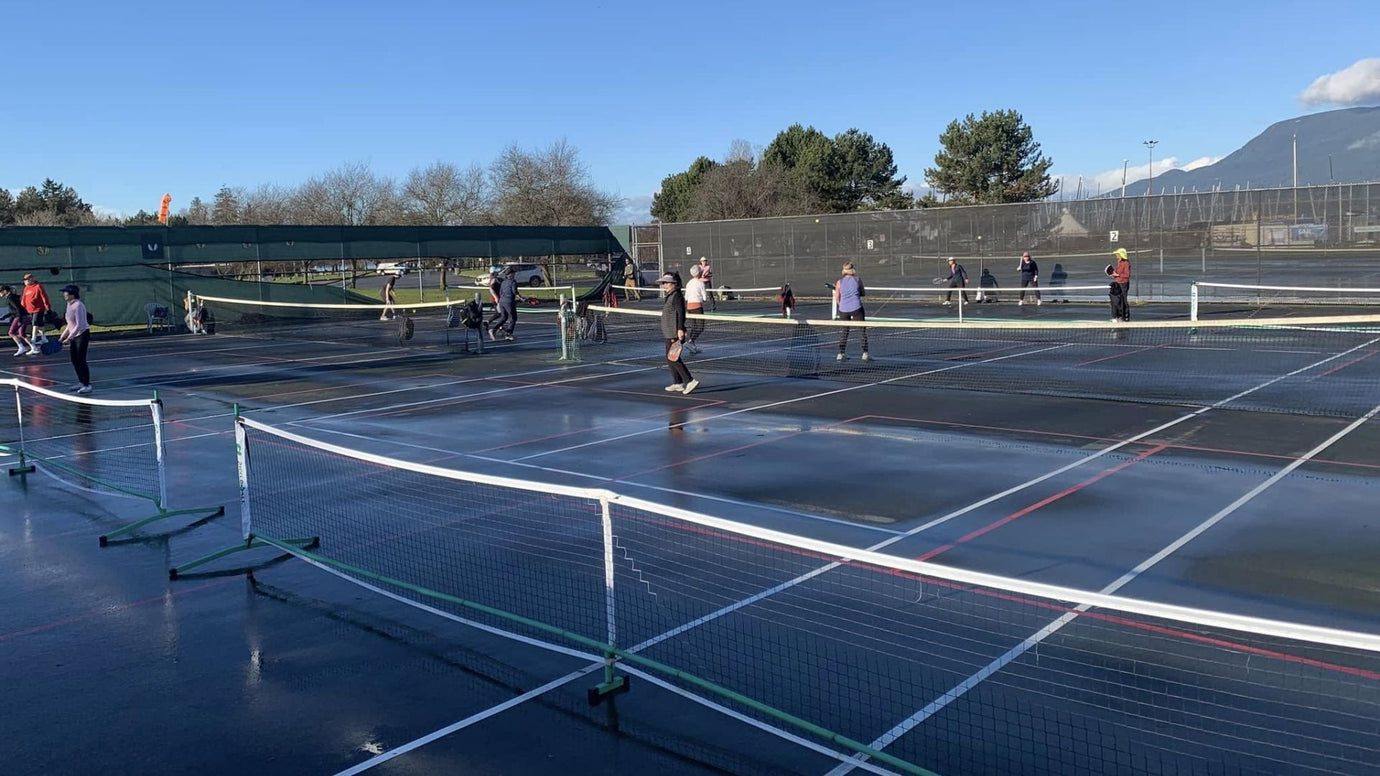As pickleball continues its meteoric rise in popularity across the United States, Honolulu is experiencing its own significant surge in demand for dedicated playing facilities [1, 2]. For contractors in this vibrant island city, understanding the nuances of building high-performance pickleball courts is crucial to meeting this growing market need. This guide delves into the essential considerations, from site preparation to selecting the right surfacing, with a particular focus on the unique environmental challenges presented by Honolulu's tropical climate.
The Booming Pickleball Market in Honolulu
Pickleball has transcended its status as a casual pastime, evolving into a serious sport enjoyed by all age groups in Honolulu [1]. The presence of dedicated indoor clubs like "Pickles at Forté" and the conversion of large venues like the Hawaiʻi Convention Center for major pickleball events underscore the sport's robust growth and the increasing need for quality infrastructure [2, 3]. Contractors who can deliver superior courts are well-positioned to capitalize on this expanding market.
Key Considerations for High-Performance Court Construction
Building a high-performance pickleball court involves more than just marking lines on a surface. It requires meticulous planning and adherence to established standards to ensure optimal playability, player safety, and long-term durability [4].
1. Site Selection and Preparation
- Space Requirements: While a standard pickleball court measures 20x44 feet, USA Pickleball recommends a total playing area of 30x60 feet to allow for adequate out-of-bounds space and safe player movement [4, 5].
- Sub-base: A stable and level sub-base is paramount. For permanent installations, this typically involves a precisely graded and leveled concrete or asphalt foundation [6]. For portable court systems, a flat, hard substrate is still essential to ensure consistent ball bounce and prevent surface irregularities.
2. Court Dimensions and Layout
Adhering to official dimensions is critical for a legitimate playing experience. This includes the 20-foot wide by 44-foot long playing area, a 7-foot non-volley zone (the "kitchen") on each side of the net, and a net height of 36 inches at the sidelines, dropping to 34 inches in the center [4].
3. Fencing, Lighting, and Accessories
High-performance courts often include proper fencing (typically 10-12 feet high), adequate lighting for evening play, and essential accessories like benches and shade structures, especially in sunny climates [4].
Navigating Tropical Challenges: Building in Honolulu's Climate
Honolulu's tropical climate—characterized by high humidity, intense sun, and frequent rainfall—presents unique challenges for outdoor court construction. Contractors must select materials and employ techniques that can withstand these environmental stressors [7].
Material Selection for Tropical Durability

- Acrylic-Coated Concrete: A common choice, these coatings are often formulated to resist sun damage, fading, and water exposure, making them suitable for tropical conditions [7, 8].
- Modular Tiles: Highly recommended for their resilience in tropical climates. Made from high-impact, UV-stable plastic, their perforated design ensures excellent drainage, preventing water accumulation. They are also mold-resistant and allow for easy installation and replacement [7, 9]. Pickleball Court Co. specializes in such portable, roll-out flooring solutions that meet these criteria, offering superior performance and durability in challenging environments.
- Polyurethane Surfaces: Known for their longevity and suitability for both indoor and outdoor use, offering good resistance to weather elements [6, 7].
Drainage Solutions
Proper drainage is non-negotiable. Outdoor courts must be constructed with a slight slope (e.g., 1% or 1 inch per 10 feet) to facilitate water runoff. Effective drainage channels around the court perimeter further enhance water removal, ensuring quick drying and preventing damage [7].
Portable Court Solutions: Flexibility and Performance
For contractors seeking efficient and adaptable solutions, portable pickleball court flooring offers significant advantages. Products from manufacturers like Pickleball Court Co. provide professional-grade, roll-out courts that combine tournament-quality performance with practical installation flexibility [10].
Benefits of Portable Flooring:
- Rapid Deployment: Can be installed quickly on any flat, hard surface, ideal for temporary events, multi-purpose sports centers, or residential applications [10].
- Durability: Multi-layer construction, UV-stable colors, and resistance to mildew, cracking, and warping ensure long-term performance, even in tropical settings [10].
- Player Safety & Performance: Engineered for optimal friction, consistent ball bounce, and advanced cushioning to reduce joint stress [10].
- Customization: Available in various colors and customizable designs to meet specific aesthetic or branding requirements [10].
Conclusion
Building high-performance pickleball courts in Honolulu requires a strategic approach that accounts for both the sport's technical demands and the local climate's environmental factors. By prioritizing durable, weather-resistant materials and efficient construction techniques, contractors can deliver exceptional playing experiences that will serve Honolulu's growing pickleball community for years to come. Portable flooring solutions, in particular, offer a versatile and high-quality option for various applications, providing a competitive edge in this burgeoning market.
Frequently Asked Questions (FAQs)
Q1: What are the standard dimensions for a pickleball court?
A1: The playing area is 20 feet wide by 44 feet long. However, for optimal play and safety, a total footprint of 30x60 feet is recommended, allowing for adequate out-of-bounds space [4, 5].
Q2: How do tropical climates affect pickleball court construction?
A2: Tropical climates with high humidity, intense heat, frequent rain, and strong UV exposure can lead to mold, cracking, fading, and poor drainage. Materials and construction methods must be chosen to counteract these effects, focusing on UV stability, mold resistance, and efficient water runoff [7].
Q3: Are portable pickleball courts suitable for high-performance play?
A3: Yes, modern portable pickleball court flooring, especially those meeting USA Pickleball league standards, are engineered for optimal performance, consistent ball bounce, and player safety. They offer excellent traction and cushioning, making them suitable for both recreational and tournament play [10].
Q4: What kind of base is needed for a portable pickleball court?
A4: Portable courts require a flat, hard, and stable substrate for proper installation and consistent play. This could be an existing concrete slab, asphalt, or a well-prepared compacted aggregate base [10].
Q5: How long does it take to install a portable pickleball court?
A5: Installation time varies depending on the size and type of portable system, but many modular tile or roll-out systems are designed for quick and easy DIY installation, often taking only a few hours to a day for a full court [9, 10].
References
[1] Honolulu Magazine. (2025, April 1). It's Everywhere: The Pickleball Craze.
[2] Civil Beat. (2025, April 25). Photo Essay: Picking Up Pickleball.
[4] USA Pickleball. Pickleball Court Construction And Maintenance Manual.
[5] AIBD. (2023, September 15). The Ultimate Guide to Building a Private Pickleball Court.
[6] Pickleland. (2024, May 26). What Is The Best Surface For A Pickleball Court?.
[8] Top Flooring. (2025, April 19). Pickleball Court Flooring Materials & Construction Guide.
[9] ModuTile. Pickleball Court Flooring, Kit, 26x52.
[10] Pickleball Court Co. Professional Pickleball Court Surfaces | Classic, Double, Triple & DIY Series.






